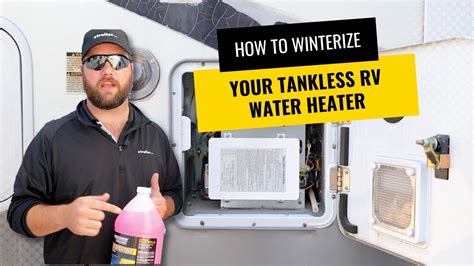RV Water Heater Draining: Your Winterization Guide
Winterizing your RV is crucial to prevent costly damage from freezing temperatures. A key component of this process is properly draining your RV water heater. Failing to do so can lead to cracked tanks, burst pipes, and significant repair bills. This comprehensive guide will walk you through the process step-by-step, addressing common questions and concerns.
Why Drain Your RV Water Heater in Winter?
Water expands when it freezes. This expansion exerts immense pressure on the water heater tank and its plumbing, potentially causing irreversible damage. Even a small crack can lead to leaks and water damage throughout your RV. Draining your water heater is a simple preventative measure that saves you from potentially thousands of dollars in repairs.
How to Drain Your RV Water Heater: A Step-by-Step Guide
The process of draining your RV water heater varies slightly depending on whether you have a gas or electric model, but the core steps remain consistent. Before you begin, ensure your water heater is turned off and cooled down.
Step 1: Locate and Turn Off the Water Heater's Bypass Valves:
Most RV water heaters have bypass valves. These valves allow you to circulate water around the heater, preventing water from entering the tank. Locate these valves (usually near the water heater) and turn them to the closed position.
Step 2: Turn Off the Water Heater's Power:
For electric water heaters, switch off the power at the breaker panel. For gas water heaters, turn off the gas supply.
Step 3: Open the Pressure Relief Valve:
This valve is usually located on the top of the water heater tank. Carefully open the valve to relieve any pressure inside the tank. Be prepared for a burst of water, so have a drain pan or bucket ready.
Step 4: Open the Drain Valve:
The drain valve is typically located at the bottom of the water heater. Open this valve, allowing water to drain into your designated drain pan or bucket.
Step 5: Open the Hot Water Faucets:
Opening the hot water faucets in your RV will help to further drain the system and remove any remaining water.
Step 6: Flush the System (Optional but Recommended):
Once the water has stopped draining, you can flush the system with a garden hose connected to the water heater's inlet. This helps remove any sediment or debris that may have accumulated in the tank. After flushing, drain the tank again to remove the remaining water.
What Type of RV Water Heater Do I Have?
Gas Water Heaters: These heaters use propane or LP gas to heat water. They generally require the same draining procedure as electric models.
Electric Water Heaters: These heaters use electricity to heat water. They're drained in the same manner as gas water heaters, but remember to switch off the power supply at the breaker box first.
How Do I Know If My RV Water Heater is Properly Drained?
Once you've completed the draining process, visually check for any water remaining in the drain pan or bucket. It's crucial to ensure the tank is completely empty.
What About Winterizing My RV Water Heater with Antifreeze?
After draining, consider using RV antifreeze to protect your water heater from freezing. This is especially important in regions with extremely cold winters. Follow the antifreeze manufacturer's instructions carefully for proper application.
What if My RV Water Heater is Stuck?
If you encounter difficulty draining your water heater, check for any obstructions in the drain valve. Try using pliers or a wrench to loosen a stubborn valve. If the problem persists, you may need to consult an RV repair technician.
How Often Should I Drain My RV Water Heater?
While draining is crucial for winterizing, it's a good practice to drain your water heater every few months, or more frequently if you live in a humid climate, to remove sediment buildup.
Can I leave my water heater full during winter storage?
No, absolutely not. Leaving your water heater full during winter storage significantly increases the risk of damage from freezing. Always drain it properly before prolonged periods of cold weather.
By following these steps and addressing potential issues proactively, you can ensure your RV water heater remains protected throughout the winter months. Proper winterization is key to preserving your RV's value and ensuring it's ready for your next adventure.

